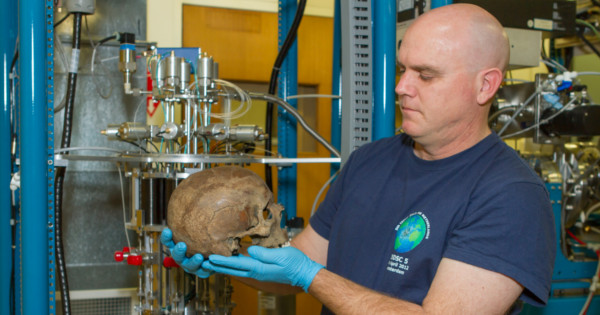
The skull of Adolf Hitler has been discovered by a team of Russian historians who found it amongst a private collection belonging to a descendant of Joseph Stalin.
The team, led by Professor Ivan Iourikanov, were given a collection of 17,324 items by Artem Fyidorovich Stergeev (Joseph Stalin’s adopted son) before he died in 2008.

BYPASS THE CENSORS
Sign up to get unfiltered news delivered straight to your inbox.
You can unsubscribe any time. By subscribing you agree to our Terms of Use
Latest Video
Among the items were three human skulls which were given to scientists to identify the bones. Two of them belonged to Stalin’s main opponents in the Bolshevik movement in the 1930′s, Grigory Yevseevich Zinoviev, who was executed in 1937, and Stalin’s second wife, Nadezhda Sergeevna Alliluyeva.
The third skull took the team very much by surprise.
Worldnewsdailyreport.com reports:
The various tests and analysis of the teeth and bones, allowed the historians to determine that the skull belonged to a man in his late 50s or early 60s, who had grown up in either Bavaria or Austria. He is estimated to have measured between 1,70 m and 1,80 m, and some clues suggest that the man had eaten meat for most of his life, but had been following a strictly vegetarian diet for some years at the time of his death.
Using some 3D forensic facial reconstruction techniques, they were able to determine the physical appearance of the individual.
By comparing the skull’s teeth with the Fuhrer’ dental files, which the Soviet forces had obtained in 1945 after tracking down an assistant to Hitler’s dentist, they were able to confirm that the skull was, indeed, Adolf Hitler’s.
A Collection of Morbid Trophies
According to Professor Iourikanov, the skulls were probably collected and kept by the Soviet leader, Josef Stalin, acting as eerie reminders of his fallen adversaries.
“The skulls all bear some small dents and cuts, which we identified as knife marks” said the renowned historian.
“This suggests that the skulls were skinned, emptied and cleaned, probably to be kept as trophies. In fact, they were found on the site of Stalin’s death, laying over the fireplace of his Kuntsevo residence. They must have been precious to him, but nobody made a great deal about it at the time, and even his adoptive son had completely forgotten about them. This could be the historical discovery of the century.”
The Museum has not decided yet, whether they will make the skulls available to the public. The direction of the Hermitage explains that the bones are clearly of great historical values, but they fear that the skull of Hitler could become a site of pilgrimage for Nazi sympathizers.


